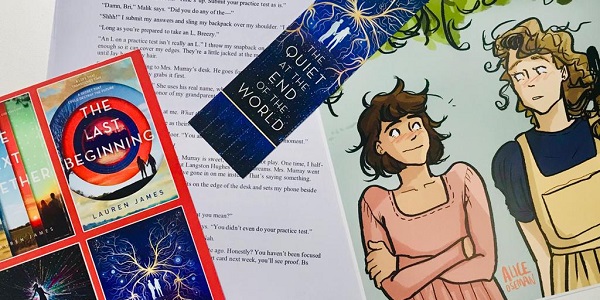
February 25, 2020, by Agnes
Writing Diversely with Lauren James
Happy LGBT history month!
This week, I had the pleasure of attending a ‘Writing Diversely’ workshop led by a University of Nottingham alumnus and author Lauren James. As a young bisexual woman, I have struggled to find well-written characters which represent me in fiction throughout my entire life. So, although I don’t consider myself much of a writer, it was interesting to learn about the process of creating and writing diverse characters. In fact, this workshop opened my eyes to the reasons why we need diversity in fiction and why it needs to be the standard. Personally, my main takeaway is to be more critical of the literature and media I consume, as there’s no excuse for a story which doesn’t reflect the world around us.
Here’s a quick guide on how to spot a good, diversely written character.
1. They’re not a token
A character which has zero personality or motivation other than their sexuality, race or disability? Yikes. A token character is one that exists purely to check a box, rather than fulfilling an important role in the story and being a nuanced, complex character in themselves. Usually, this is a walking, talking stereotype and you can find them in the role of a gay best friend or a POC sidekick.
2. They’re canonically diverse
Lauren James introduced me to the topic of “coded” characters; ones that are not explicitly queer or disabled but display the characteristics of such, implying that they’re diverse characters without having to explicitly state so. An example in the workshop was Sherlock Holmes, who is “autism-coded”; he portrays the characteristics associated with people on the autism spectrum but he’s never explicitly described as being neurodiverse. The author can’t expect every reader to imagine diversely written characters when they aren’t portrayed as such… so “coded” characters aren’t really diverse at all.
3. They’re not fetishised/romanticised
How many times do we have to read a description of someone’s “chocolate” or “caramel” skin? If an author has to refer to food when describing POC characters – they’re lacking creativity. In the same bin lay characters with poetic depression and background lesbian kisses. A fetishised or romanticised view of a character’s identity erases their struggle and invalidates the experience of the people they represent. This, by extension, makes them unrelatable and unrealistic characters.
It can be difficult to find books diverse in their characters. Luckily, for LGBT history month, our libraries at the University of Nottingham are displaying a collection of LGBT literature inspired by the suggestions from our community. And if you’re interested in reading Lauren James’ books, you can find them in Blackwells in Portland Building! Happy reading!
No comments yet, fill out a comment to be the first

Leave a Reply